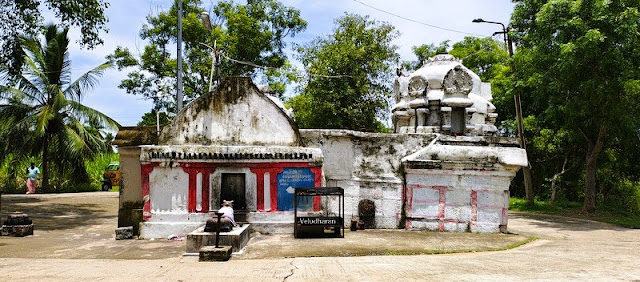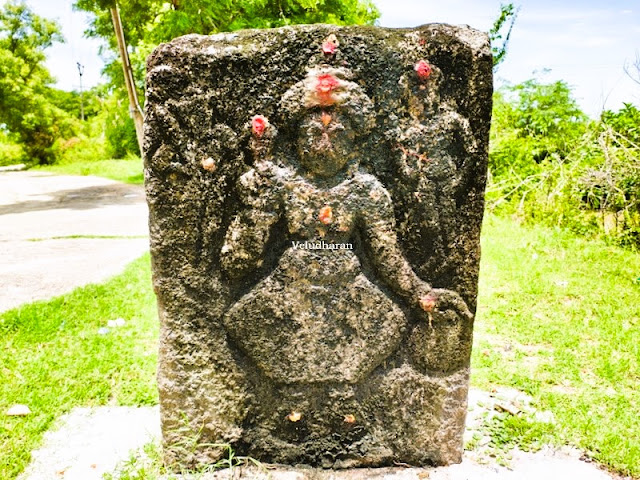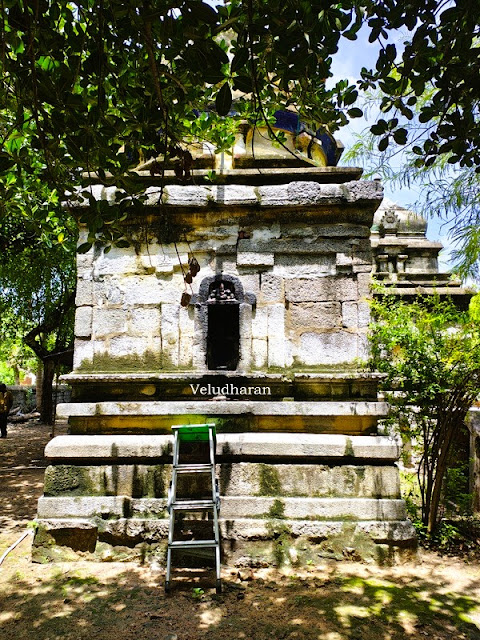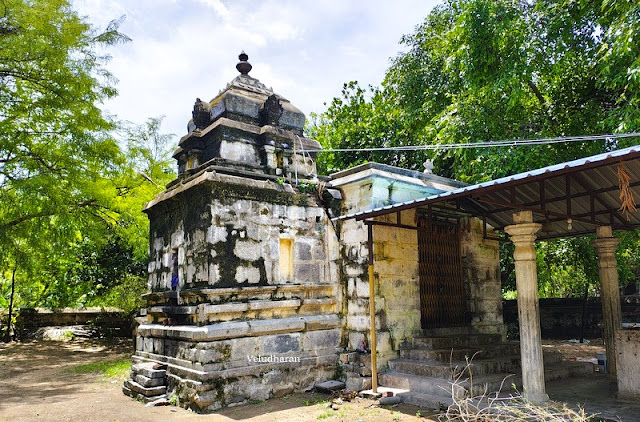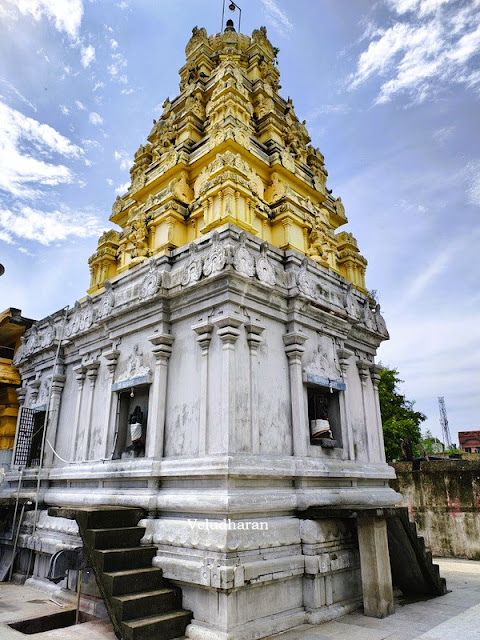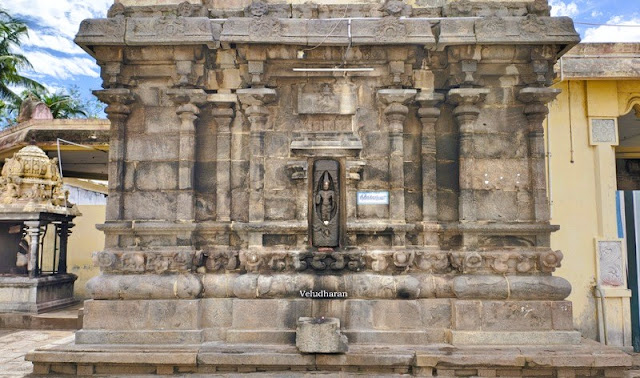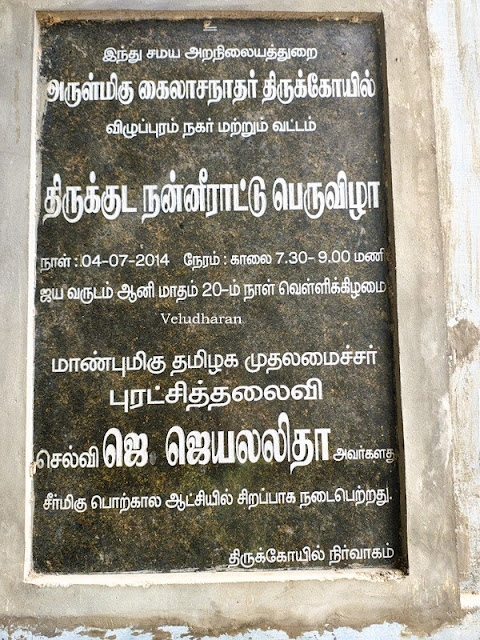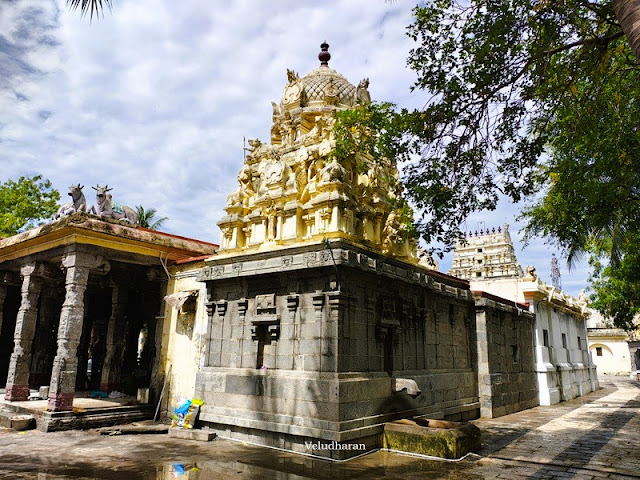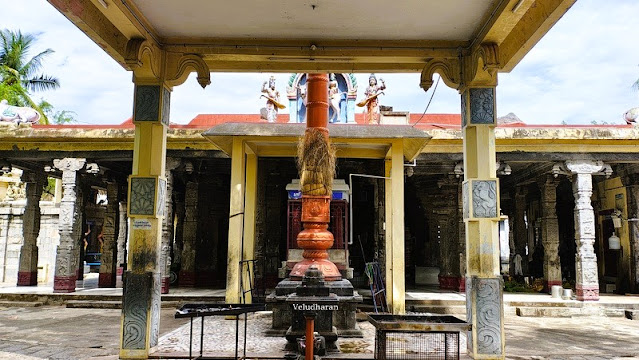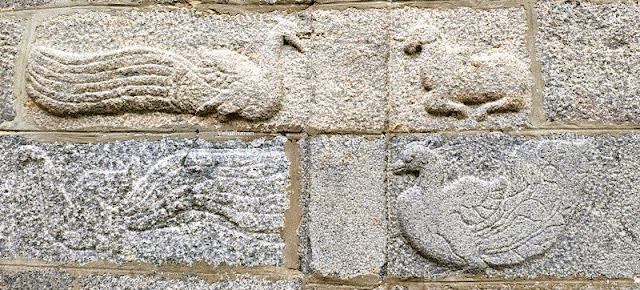The
visit to this Sri Kodi Kodutha Nathar Temple, at Orukodi, which is about 10 km west of
Viluppuram city, was a part of the “Shiva and Vishnu Temples Visit in and around
Viluppuram” on 11th August 2024.
Moolavar : Sri Kodi Kodutha Nathar
Consort : Sri Olai Paditha Nayagi/ ஸ்ரீ ஓலை படித்த நாயகி
Some
of the salient features of this temple are….
The
temple faces east with Balipeedam and Rishabam. Moolavar in the Sanctum is on a
round avudayar. Dakshinamurthy is alone in the koshtam.
In
the outer praharam, Vinayagar, Murugan, a dilapidated Sannidhi, Chandikeswarar,
and Nagars. In addition to the above, Jyeshta Devi, Dakini, Kotravai /
Mahaishasuramardini are in the form of bas-reliefs on flat stones installed on
the east side of the temple.
Ambal
is in a separate sannidhi in the ardha mandapam, facing south. A Balipeedam is
installed in the outer praharam, facing Ambal Sannidhi. Ambal is in a standing
posture with abhaya varada hastam.
ARCHITECTURE
The
whole temple was built with bricks. The temple was not built according to any temple
architecture. The temple consists of the sanctum sanctorum and ardha mandapam. An eka tala vesara vimanam is over the sanctum Sanctorum. There are no images in the greeva koshtas. The ardha mandapam is of vavval nethi style.
A
small opening measuring 6 inches x 3 inches is on the east side wall. Usually,
an opening or a jala will be provided in front of Rishabam if no entrance is
provided on the wall between Sanctum Sanctorum and Rishabam. Moreover, the
priest will keep the temple closed after the poojas. Naturally, if
anybody comes for the darshan, they have to worship through this hole. Shiva
Devotees make this a special feature of this temple.
HISTORY
AND INSCRIPTIONS
Based
on the iconography of Jyeshta Devi, Chandikeswarar, and Kotravai, experts
believe that the original temple belonged to the Pallava Period, ie, the 07th
to 08th century. The original brick structure was also maintained, and
not much modification was carried out.
LEGENDS
It
is believed that one Core Siddhars or saints did penance and was installed in this
forest. They also left sealed Palm manuscripts and invaluable treasures before
Shiva and Ambal. Shiva is in this temple. Hence, this place is called Orukodi. It
is believed that anybody who came and worshiped Shiva would get wealth and
prosperity equivalent to Cores. Hence, Shiva is called Kodi Kodutha Nathar.
Later,
it is believed that manuscripts were obtained from the locked wall, and the golden
manuscripts found disappeared. It is further believed that the Golden
manuscripts are in the well. The stone-hitting metal sound will be heard if a stone is dropped into the well. Ambal is called Olai Paditha Nayagi – ஓலை படித்த நாயகி- the ability to read manuscripts.
POOJAS
AND CELEBRATIONS
Only
oru kala pooja is conducted, and no other special poojas are conducted.
TEMPLE
TIMINGS
Since
oru kala pooja is conducted, the opening and Closing Times are unpredictable.
CONTACT
DETAILS
Priest
A. Murugan may be contacted at his mobile number, +919047110381, and may be contacted for Darshan.
HOW
TO REACH
This
Sri Kodi Kodutha Nathar Temple is, away from the village of Orukodi, about 8.6
km from the Viluppuram Railway Station, 8.0 km from the New Bus Stand, 45 km from Tindivanam, and 173 km from Chennai.
The nearest
Railway Station is Viluppuram. (The Venkatesapuram, a small Railway Station, is
about a km from the Temple).
LOCATION
OF THE TEMPLE: CLICK HERE
---
OM SHIVAYA NAMA---








